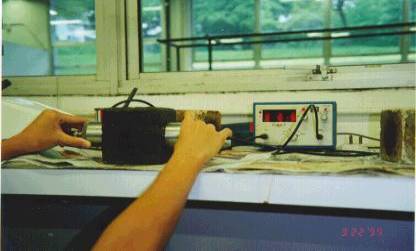Ultrasonic Pulse Velocity Measurement Test
Application
The pulse velocity method is an ideal tool for establishing whether concrete is uniform. It can be used on both existing structures and those under construction. Usually, if large differences in pulse velocity are found within a structure for no apparent reason, there is strong reason to presume that defective or deteriorated concrete is present.
High pulse velocity readings are generally indicative of good quality concrete. A general relation between concrete quality and pulse velocity is given in Table 1.
Fairly good correlation can be obtained between cube compressive strength and pulse velocity. These relations enable the strength of structural concrete to be predicted within ±20 per cent, provided the types of aggregate and mix proportions are constant.
The pulse velocity method has been used to study the effects on concrete of freeze-thaw action, sulphate attack, and acidic waters. Generally, the degree of damage is related to a reduction in pulse velocity. Cracks can also be detected.

The pulse velocity method can also be used to estimate the rate of hardening and strength development of concrete in the early stages to determine when to remove formwork. Holes have to be cut in the formwork so that transducers can be in direct contact with the concrete surface. As concrete ages, the rate of increase of pulse velocity slows down much more rapidly than the rate of development of strength, so that beyond a strength of 2,000 to 3,000 psi (13.6 to 20.4 MPa) accuracy in determining strength is less than ±20%.